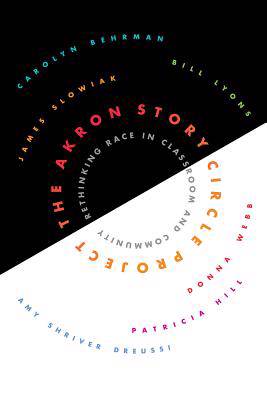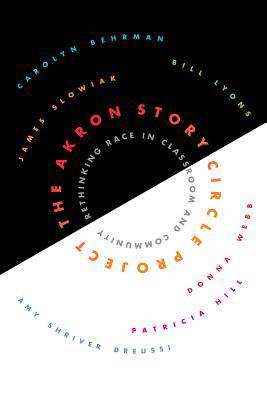
Door een staking bij bpost kan je online bestelling op dit moment iets langer onderweg zijn dan voorzien. Dringend iets nodig? Onze winkels ontvangen jou met open armen!
- Afhalen na 1 uur in een winkel met voorraad
- Gratis thuislevering in België vanaf € 30
- Ruim aanbod met 7 miljoen producten
Door een staking bij bpost kan je online bestelling op dit moment iets langer onderweg zijn dan voorzien. Dringend iets nodig? Onze winkels ontvangen jou met open armen!
- Afhalen na 1 uur in een winkel met voorraad
- Gratis thuislevering in België vanaf € 30
- Ruim aanbod met 7 miljoen producten
Zoeken
The Akron Story Circle Project
Rethinking Race in Classroom and Community
Carolyn Behrman, Bill Lyons, Patricia Hill, James Slowiak
Paperback | Engels
€ 27,95
+ 55 punten
Omschrijving
Cultures around the world have long employed storytelling to transmit important values and beliefs and to build community. Further, some research has indicated that individuals retain more from stories than other forms of information transmission like lectures. The pedagogical use of storytelling might have even more relevance in our digital society in which communication is shorter and less personal.Using ideas and practices generated by John O'Neal and Theresa Holden through their Color Line Project, several faculty members at the University of Akron began a storytelling project coinciding with Akron's "Rethinking Race" event. The project brought together an intergenerational and intercultural group of students, community members, and other parties on an equal playing field, allowing participants to operate as co-creators of a community's consciousness. The interactions brought a level of understanding about race that could not have been achieved in isolation. Moreover, the conversations, the stories, resulted in rich new avenues of academic engagement and extended artistic projects.This book is part user's manual and part users' stories. Mostly, it is the tale of a journey. Unlike a traditional classroom, in which an instructor has control, stories can veer anywhere, which can be a risky proposition. However, the results in understanding and learning cannot be denied. As one of the Akron faculty members put it: "we likely fail as teachers if our lesson plans do not generate hot moments, difficult dialogues, of both the foreseeable and the unanticipated variety." The Akron Story Circle Project has initiated a process of lifetime learning and reassessment. One student was quite direct: "While we may look different on the outside, come from different cities or towns, grow up in different kinds of family, we all are participating in the same world and we all are trying to find what's right, do what's right, or simply survive this crazy thing we call life."
Specificaties
Betrokkenen
- Auteur(s):
- Uitgeverij:
Inhoud
- Aantal bladzijden:
- 225
- Taal:
- Engels
Eigenschappen
- Productcode (EAN):
- 9781629220529
- Verschijningsdatum:
- 31/01/2017
- Uitvoering:
- Paperback
- Formaat:
- Trade paperback (VS)
- Afmetingen:
- 152 mm x 226 mm
- Gewicht:
- 439 g

Alleen bij Standaard Boekhandel
+ 55 punten op je klantenkaart van Standaard Boekhandel
Beoordelingen
We publiceren alleen reviews die voldoen aan de voorwaarden voor reviews. Bekijk onze voorwaarden voor reviews.











